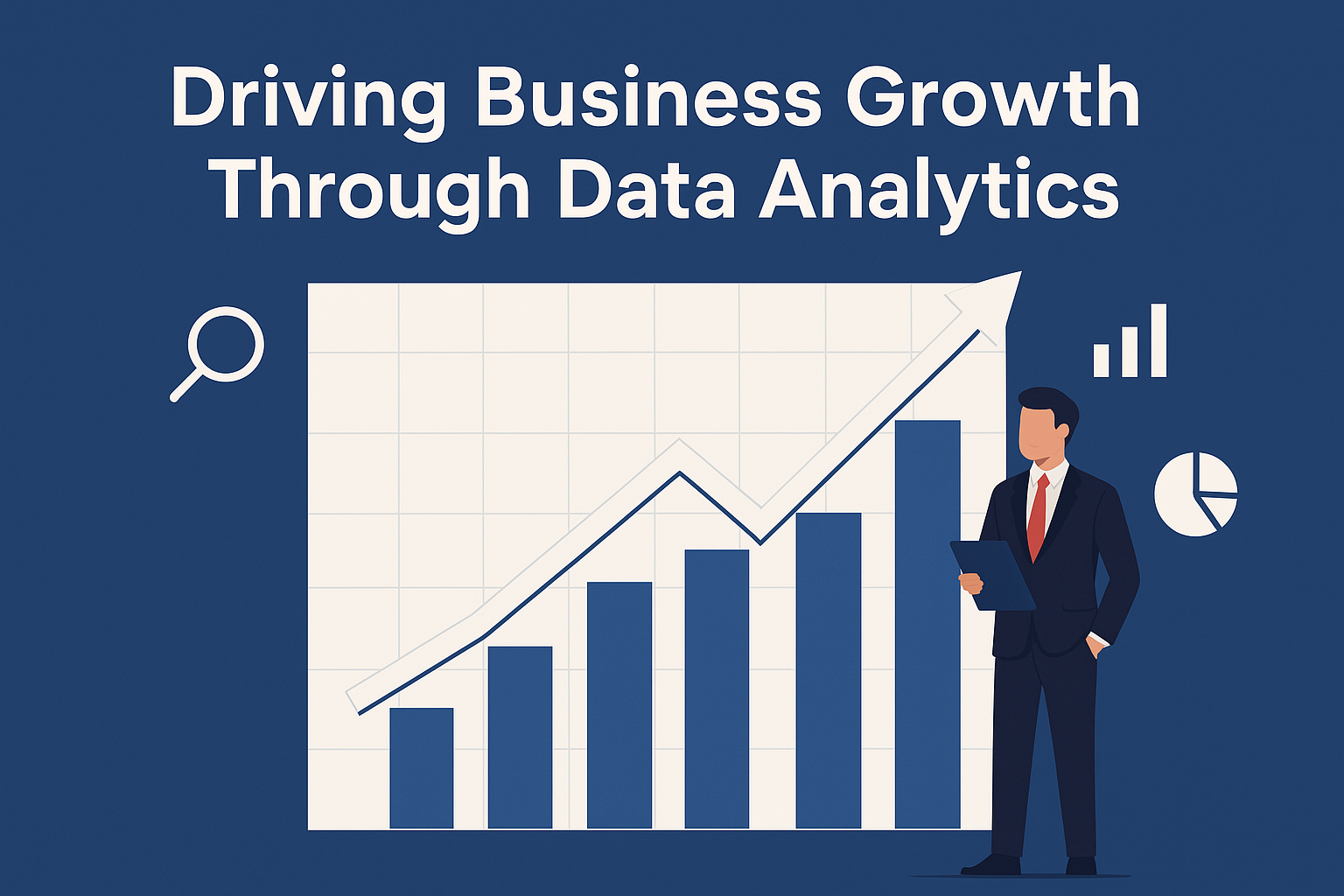From Data to Decisions: How Analytics Powers Business Growth

Posted On: 2025-March-20
3 Minutes Read
Author: jack frost
What is Data Analytics?
Data analytics is the process of examining raw data to uncover patterns, trends, correlations, and insights that inform better decision-making. It moves beyond data collection to interpretation and action—transforming information into strategy.
The Role of Data Analytics in Business Growth
At its core, consistent growth relies on better decisions. Here’s how data analytics empowers smarter choices:
- Replaces Guesswork with Insight
Make informed decisions based on real evidence rather than assumptions. - Identifies Opportunities
Spot untapped markets, emerging trends, and unmet customer needs. - Reduces Risk
Detect potential downturns or operational bottlenecks before they escalate. - Boosts Efficiency
Optimize processes, reduce waste, and allocate resources effectively. - Enhances Customer Experience
Understand preferences and behavior to deliver personalized, value-driven interactions.
Key Areas Where Data Analytics Delivers Impact
1. Customer Insights
- Segmentation: Target groups based on behavior, demographics, or purchase history.
- Personalization: Offer tailored experiences and recommendations.
- Churn Prediction: Retain customers through proactive engagement.
- Customer Lifetime Value (CLV): Focus on high-value relationships.
2. Marketing & Sales Optimization
- Campaign ROI: Track performance across channels to invest smarter.
- Lead Scoring: Prioritize leads with higher conversion potential.
- Sales Forecasting: Predict future trends with greater accuracy.
- Pricing Strategy: Use market data to optimize price points.
3. Operational Efficiency
- Process Optimization: Eliminate inefficiencies in workflows.
- Supply Chain Management: Forecast demand and streamline logistics.
- Resource Allocation: Maximize value from staffing and budgeting.
4. Product & Service Development
- Market Analysis: Use data to uncover needs and innovation opportunities.
- Feature Prioritization: Build what users want, based on actual behavior.
- UX Improvement: Enhance usability by analyzing interaction data.
5. Financial Strategy
- Profitability Analysis: Identify which products or segments drive returns.
- Budgeting & Forecasting: Plan with precision using historical and predictive data.
- Risk Management: Anticipate and mitigate financial risks.
How to Get Started with Data Analytics
- Set Clear Objectives
Define the business question or goal (e.g., reduce churn, increase efficiency). - Identify Data Sources
Leverage internal systems (CRM, ERP, web analytics, surveys, etc.). - Choose the Right Tools
Start with spreadsheets, then scale to BI platforms (e.g., Power BI, Tableau). - Develop Skills or Hire Expertise
Train staff, hire analysts, or partner with consultants. - Start Small, Then Scale
Begin with one high-impact area, measure results, and iterate. - Promote a Data-Driven Culture
Encourage data usage across teams with leadership support and accessible insights.
Challenges to Consider
Be mindful of:
- Data Quality: Insights are only as good as the input.
- Privacy & Security: Stay compliant with regulations.
- Cost & Expertise: Balance investment in tools and talent.
- Change Management: Overcome internal resistance through education and transparency.
Final Thoughts
As of 2025, data analytics is not a luxury—it’s a growth imperative. Businesses that harness data to guide strategy, optimize operations, and enhance customer engagement will be best positioned for long-term success. In a world driven by information, those who interpret and act on data effectively will lead the way.